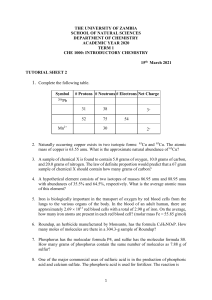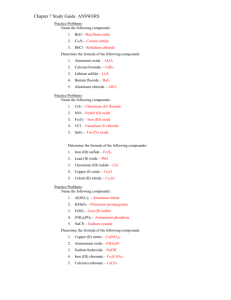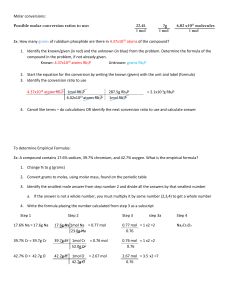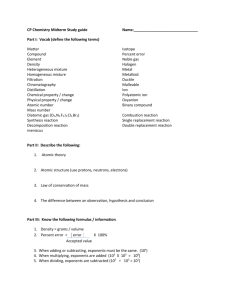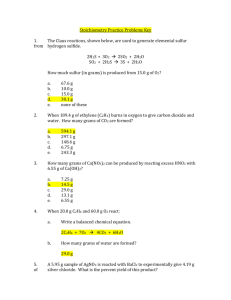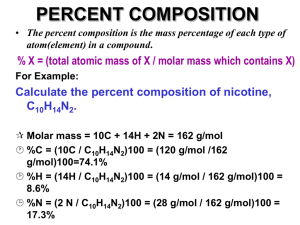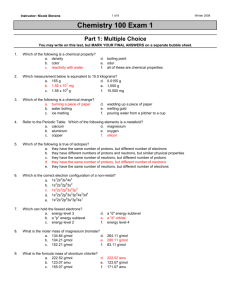A.P. Chemistry Test: Stoichiometry & Reactions
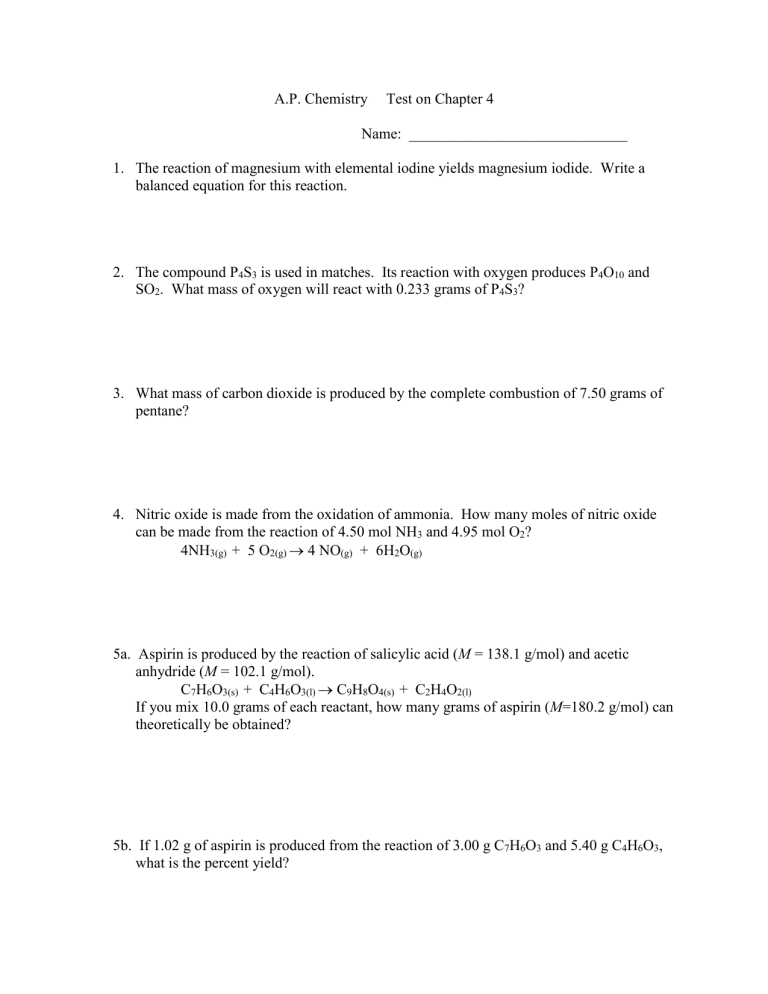
A.P. Chemistry Test on Chapter 4
Name: _____________________________
1.
The reaction of magnesium with elemental iodine yields magnesium iodide. Write a balanced equation for this reaction.
2.
The compound P
4
S
3
is used in matches. Its reaction with oxygen produces P
4
O
10
and
SO
2
. What mass of oxygen will react with 0.233 grams of P
4
S
3
?
3.
What mass of carbon dioxide is produced by the complete combustion of 7.50 grams of pentane?
4.
Nitric oxide is made from the oxidation of ammonia. How many moles of nitric oxide can be made from the reaction of 4.50 mol NH
3
and 4.95 mol O
2
?
4NH
3(g)
+ 5 O
2(g)
4 NO
(g)
+ 6H
2
O
(g)
5a. Aspirin is produced by the reaction of salicylic acid ( M = 138.1 g/mol) and acetic anhydride ( M = 102.1 g/mol).
C
7
H
6
O
3(s)
+ C
4
H
6
O
3(l)
C
9
H
8
O
4(s)
+ C
2
H
4
O
2(l)
If you mix 10.0 grams of each reactant, how many grams of aspirin ( M =180.2 g/mol) can theoretically be obtained?
5b. If 1.02 g of aspirin is produced from the reaction of 3.00 g C
7
H
6
O
3
and 5.40 g C
4
H
6
O
3
, what is the percent yield?
6. Under certain conditions, the formation of ammonia from nitrogen and hydrogen has an
8.12% yield. Under these conditions, how many grams of NH3 will be produced from the reaction of 25.0 g N
2
and 2.00 g H
2
?
7.
A 4.65 g sample of an oxide of copper, when heated in a stream of hydrogen, forms 0.586 g
H
2
O and copper metal. What is the formula for the compound?
8.
Polyethylene is a polymer consisting of only carbon and hydrogen. If 1.000g of the polymer is burned in oxygen it produces 1.285 g H
2
O and 3.138 g CO
2
. What is the empirical formula for polyethylene?
9.
A compound contains only carbon, hydrogen, and oxygen. Combustion of 10.68 g of the compound yields 16.01 g of carbon dioxide and 4.37 g of water. The molar mass of the compound is 176.1 g/mol. What are the empirical and molecular formulas of the compound?
10.
What compounds are produced when metal oxides are mixed with water? What is another name for a metal oxide?
11.
If 1.928 g KNO
3
is dissolved in enough water to make 250.0 mL of solution, what is the molarity of potassium nitrate?
12.
Provide directions for preparation of 0.500 L of 0.150 M NaOH from a 6.00 M stock solution.
13.
You mix 50.0 mL of 0.165 M AgNO
3
with 25.0 mL of 0.302 M KCl . What is the maximum mass of AgCl that can be formed?
14.
What happens when ionic compounds are dissolved in water? How is this shown in a chemical reaction?
15.
What factors are considered when a chemist sets up a reaction and selects the limiting and excess reagents?
16.
Why is it important to determine the limiting reagent in a stoichiometry problem?
17. A mixture of copper and silver with a mass of 1.00 g is analyzed to find the percent of each component in the mixture. After reacting the copper and silver with nitric acid to form metal ions in solution, the silver is precipitated out of the mixture by adding sodium phosphate. 0.893 g of precipitate is formed. Find the percent silver in the mixture.
